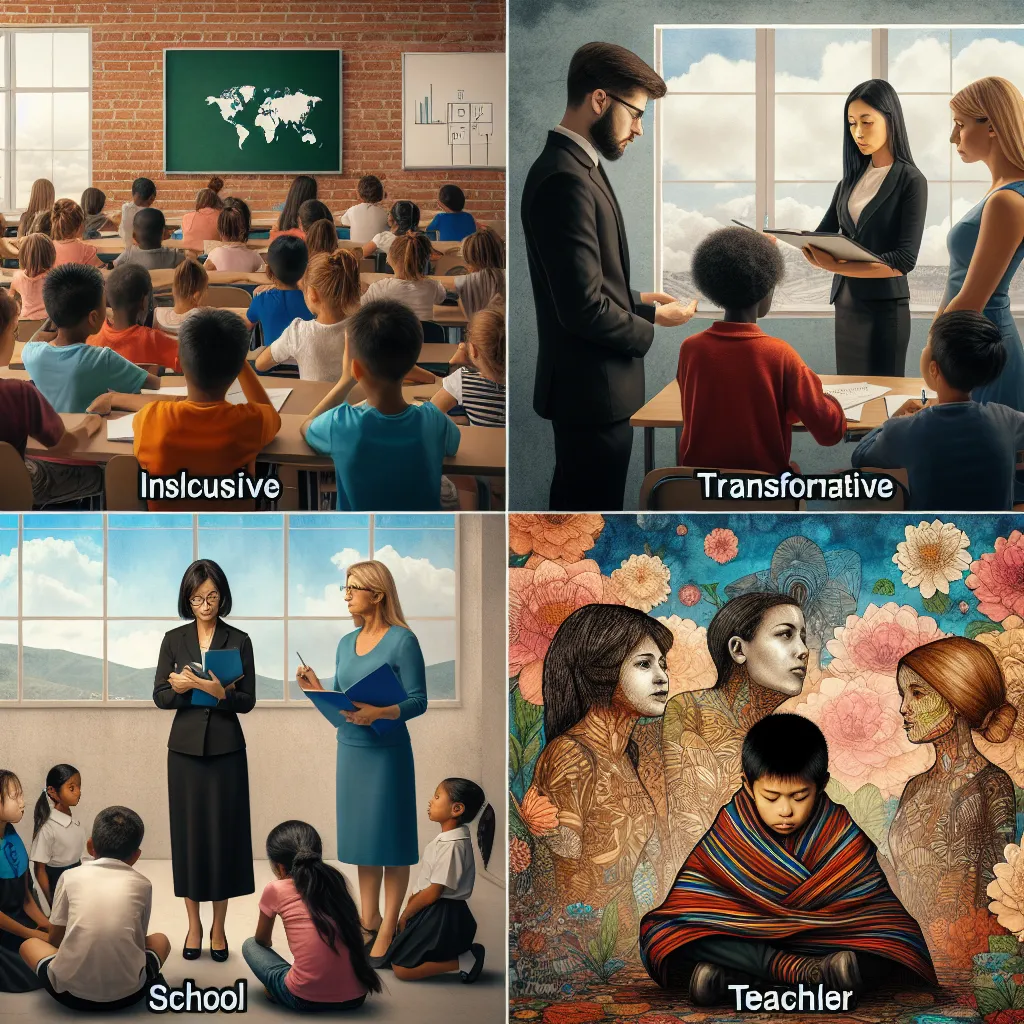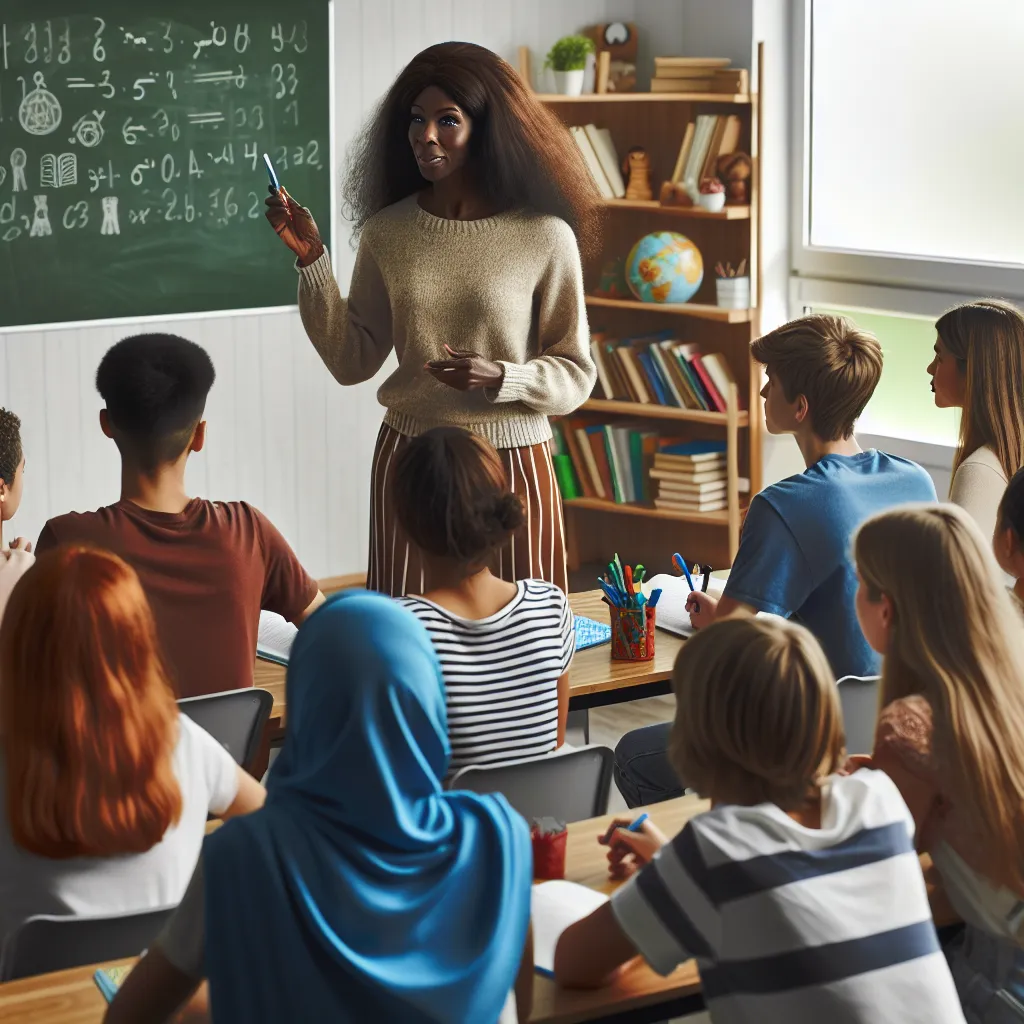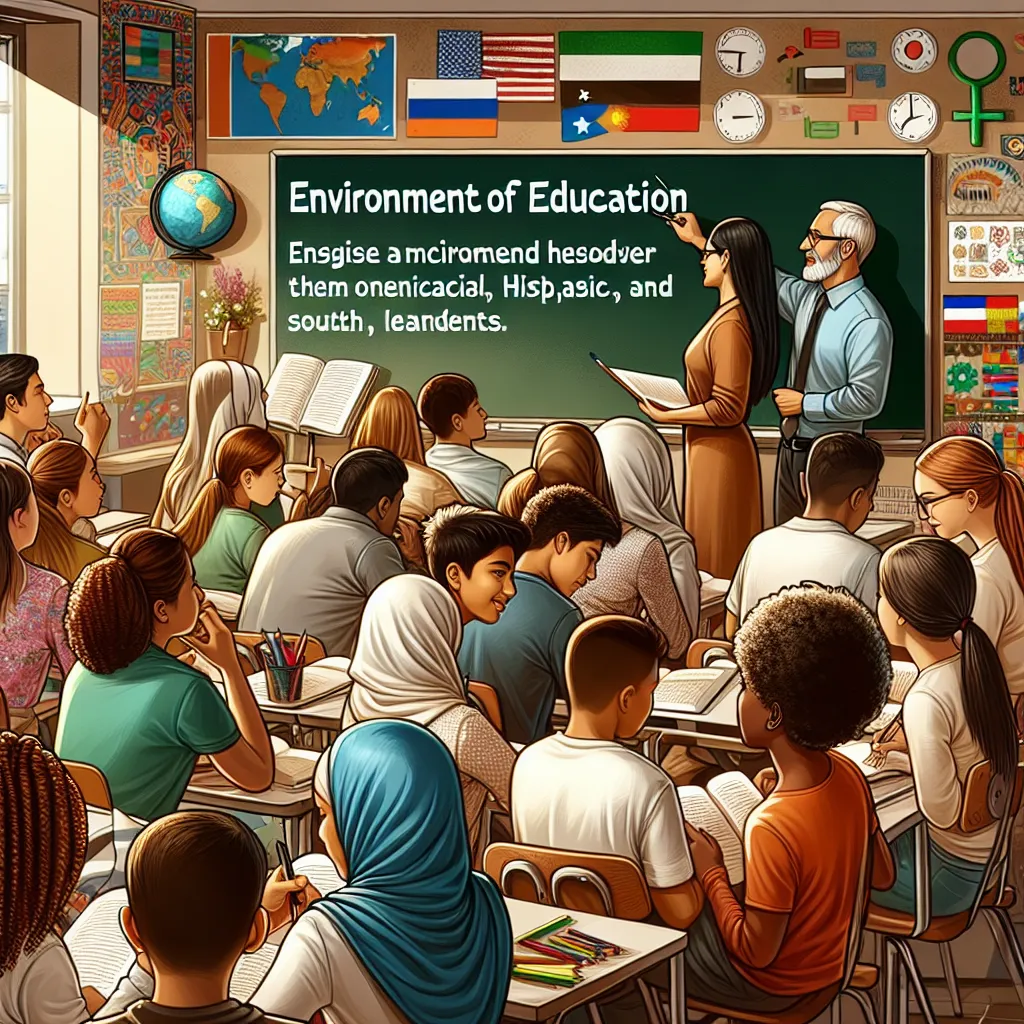Ask AI on The Internet
Question: QUESTION 1 In your own words, write a short description of the following concepts: 1.1 Inclusive Education. (2) 1.2 A transformative teacher. (2) 1.3 Special school. (2) 1.4 Barriers to learning. (2) 1.5 Social isolation. (2) (2X5=10) QUESTION 2 One of the responsibilities of the teacher as an agent of inclusivity is to be able to identify and address diversity in the classroom. Hence UNESCO (2001) highlights a nine-point plan for a teacher to deal with diversity in the learning environment. In relation to the above statement name and briefly explain by giving classroom related examples any 4 of the suggested nine-point plan (You will get one mark for naming and two marks for explaining using classroom related examples). ` (4X3=12) QUESTION 3 It is the teachers’ responsibility to create an enabling learning environment for learners by bringing in seven principles that optimise or boost learning. Read the following activities given to learners. Identify and write down one S.P.E.C.I.A.L principle that is demonstrated in each activity. NB: These principles are stated in Learning Unit 7 of your learning guide. Do not rewrite the statements. 3.1. When the Grade 5 Economic Management Sciences (EMS) class is given a task to role-play entrepreneurship day. (2) 3.2. A group practical activity to demonstrate the concept “evaporation causes cooling” in a science classroom. (2) BTE2601 ASSESSMENT 04/2024 3.3. Grade 9 Natural Science class learners asked if a cup of cold water and a cup of cold milk are placed in a refrigerator at the same time, which one will freeze first’? (2) 3.4. Learners writing a mid-year examination. (2) 3.5 Grade 3 learners singing the song of ‘alphabets. (2) 3.6 A Mathematics re-test on mixed fractions is given to grade 4 learners. (2) 3.7 A research activity about the relationship between the learner’s blood groups and the appropriate food to eat. (2) [14] QUESTION 4 4.1 Explain in detail any three benefits of a caring learning environment. (3X3=9) 4.2 Name five main entrepreneurial skills. (1X5=5)
### QUESTION 1 1.1 **Inclusive Education**: Inclusive Education refers to an educational approach where all students, regardless of their varied abilities, backgrounds, and needs, learn together in the same environment. It emphasizes the elimination of barriers and ensures equal opportunities for all students to participate and succeed in learning activities. 1.2 **A Transformative Teacher**: A transformative teacher is one who goes beyond traditional teaching methods to inspire and empower students. They focus on personal growth, critical thinking, and social awareness, challenging students to make positive changes in their lives and communities. 1.3 **Special School**: A special school is an educational institution designed to cater specifically to students with special needs or disabilities. These schools provide tailored instruction, resources, and support to help these students achieve their fullest potential. 1.4 **Barriers to Learning**: Barriers to learning are factors that hinder a student's ability to access education and achieve academic success. These can include physical disabilities, learning difficulties, emotional and social challenges, as well as external factors such as socio-economic issues and lack of resources. 1.5 **Social Isolation**: Social isolation refers to the state of being detached from social interactions and relationships. In an educational context, it can occur when students are excluded from participating in activities, leading to feelings of loneliness and separation from their peers. ### QUESTION 2 1. **Create Inclusive Classrooms**: - **Explanation**: Ensure that all students are welcomed and feel valued. - **Example**: Designing lessons that include materials and examples relevant to various cultural backgrounds and learning needs, thus fostering a sense of belonging for every student. 2. **Develop a Supportive Classroom Climate**: - **Explanation**: Build a learning environment where students feel safe and supported. - **Example**: Encourage open communication and respect among students by implementing class rules that promote kindness and mutual respect. 3. **Adapt Teaching Methods**: - **Explanation**: Modify teaching strategies to accommodate diverse learning styles and needs. - **Example**: Using visual aids, hands-on activities, and interactive methods to teach a concept, ensuring that both visual and kinesthetic learners can grasp the material. 4. **Collaborate with Parents and Community**: - **Explanation**: Engage with parents and community members to support student learning. - **Example**: Organizing parent-teacher meetings and community workshops to discuss student progress and address any learning barriers collaboratively. ### QUESTION 3 3.1 **Simulation**: - **Explanation**: The activity involves students acting out scenarios to understand economic concepts, which promotes experiential learning. 3.2 **Practical Experiment**: - **Explanation**: The hands-on activity encourages students to understand scientific concepts through observation and participation, demonstrating the principle of active learning. 3.3 **Inquiry-Based Learning**: - **Explanation**: Students are encouraged to ask questions and investigate real-world problems, fostering critical thinking and scientific inquiry. 3.4 **Assessment**: - **Explanation**: Formal examinations assess students' knowledge and understanding, highlighting the principle of evaluation in learning. 3.5 **Repetition**: - **Explanation**: Singing the alphabet song reinforces letter recognition and sequencing, demonstrating the principle of repeated practice. 3.6 **Feedback & Correction**: - **Explanation**: The re-test provides an opportunity to review and improve understanding, emphasizing corrective feedback as a principle. 3.7 **Research and Application**: - **Explanation**: The research task requires students to apply academic concepts to their personal lives, promoting deeper understanding and real-world application. ### QUESTION 4 4.1 **Three Benefits of a Caring Learning Environment**: - **Enhanced Academic Performance**: - **Detail**: A supportive and caring environment reduces anxiety and stress, allowing students to focus better on their studies and perform well academically. - **Example**: Teachers acknowledging student efforts and providing constructive feedback can boost self-esteem and motivation. - **Improved Social Skills**: - **Detail**: When students feel cared for, they are more likely to participate in class discussions and group activities, which helps develop their interpersonal skills. - **Example**: Group projects and collaborative learning activities where students are encouraged to work together and share ideas. - **Emotional Well-being**: - **Detail**: A nurturing environment supports emotional health, which is crucial for overall development and learning. - **Example**: Providing counseling services and creating a space where students can express their feelings and seek help when needed. 4.2 **Five Main Entrepreneurial Skills**: 1. **Creativity**: The ability to generate innovative ideas and solutions. 2. **Problem-solving**: Identifying issues and developing effective solutions. 3. **Communication**: Effectively conveying information and ideas. 4. **Leadership**: Guiding and motivating a team to achieve goals. 5. **Financial Literacy**: Understanding financial management, budgeting, and investment.
Think your answer is better than the AI's? Post it below.
Other Most Relevant Posts:
 1. Inclusive Education
2. Transformative Teaching
3. Special Schooling
4. Learning Barriers
5. Addressing Social Isolation
6. Embracing Diversity
7. Adaptive Teaching
8. Building Relationships
9.
1. Inclusive Education
2. Transformative Teaching
3. Special Schooling
4. Learning Barriers
5. Addressing Social Isolation
6. Embracing Diversity
7. Adaptive Teaching
8. Building Relationships
9.
 1. Inclusive Education
2. Transformative Teacher
3. Special School
4. Barriers to Learning
5. Social Isolation
Recognizing Individual Needs
Building a Supportive Classroom Culture
Providing Diff
1. Inclusive Education
2. Transformative Teacher
3. Special School
4. Barriers to Learning
5. Social Isolation
Recognizing Individual Needs
Building a Supportive Classroom Culture
Providing Diff
Question Tags
If you want your question answered by an AI, click here.





Post your own comment: